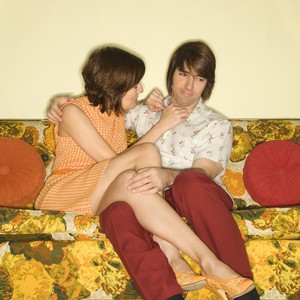 Let’s face it. We all have feelings we’d rather not have. There are situations that bring up emotions that we simply cannot or won’t handle, so we just don’t go there. Rather than feel the feeling and get it over with, we change the subject, distract ourselves, walk away or completely shut the situation down. However, what are we so afraid of?
Let’s face it. We all have feelings we’d rather not have. There are situations that bring up emotions that we simply cannot or won’t handle, so we just don’t go there. Rather than feel the feeling and get it over with, we change the subject, distract ourselves, walk away or completely shut the situation down. However, what are we so afraid of?
In the end, we all have the same basic fears. We are scared of being an insignificant nobody and terrified of being unlovable. It does not matter who we are, how much we have, the size of our accomplishments or the power we wield. If we have an ego—and we all do—some part of our “self” has these universal fears.
We develop these fears growing up as young children as we learn how life works. We learn the rules. There are things we can and cannot do. When we follow the rules, Mum, Dad, and whoever has an influence in our upbringing, are happy. When we don’t, there are consequences. As small children, all we want is love; therefore, learning about these consequences is traumatic. It only takes a trauma or two to convince us that this world is not a safe and love filled place. Thus begins the cultural shaping.
We learn what it means to be a good person in our family and our society. Yet this is often different from who we are, so we must begin to conform. We are taught how to get love, what it means to be good, acceptable ways of being and what the allowable feelings and emotions are. We also learn what is not okay. Little boys cannot be this way, have these feelings or do that. Little girls should never be seen doing this, saying that or feeling this way. Everyone learns particular things based on their upbringing and cultural background.
Our cultural training teaches us how to be lovable and how to be “a somebody”. It becomes natural for us to want to protect these things within ourselves. When feelings or desires that do not follow the cultural rules surface within us, we become afraid of the consequences. In order to stay loved and be somebody, we must turn these unacceptable feelings off. We eradicate any trace of them from our body and mind.
We suppress, repress and disconnect. We shut down anything and everything that brings us close to the feeling. Whether we are conscious of it or not, how we do this happens at the physical, emotional and mental levels.
In our bodies we tense our muscles to limit the movement that brings on the emotion. The typical energy flow of the emotion is blocked and breath is diverted from any place in our body that allows the feeling of the emotion. This stops the feeling, hides it from the mind and removes it from our awareness.
In our minds, we shift our focus to distract ourselves from the unwanted feeling. We may use physical diversions like pain or sickness, emotional substitutions like anger, sadness or euphoria, or mental constructions and rationalizations to obstruct the underlying, unacceptable feeling. In this way, we never allow ourselves to truly experience the unwanted feeling or emotion brought up by a situation or circumstance. Instead, we experience our concept of it.
This concept – whether it is that the situation or circumstance causes us physical pain, makes us stressed out, emotionally paralyzed, sad or angry, or is rationalized into some other story – keeps us from truly having the real and raw experience. Our unwillingness to “go there” makes us vigilant and on constant alert to any situation or circumstance that might bring up the feeling. This fear can make us feel helpless and hopeless.
A friend once told me “when I was a young child, my Dad once told me, “A coward dies a thousand times, a brave man only once.” Whenever I say, “I don’t want to go there”, I suffer a thousand deaths instead of braving an unwanted feeling that may last only a few minutes.” Many of us have similar patterns repeating in our bodies.